Abstract
Reduction in petiolar auxin transport has been proposed as one of the functional actions of endogenous or exogenous ethylene as it regulates intact leaf abscission. If this hypothesis is correct, auxin-transport inhibitors should hasten the rate or amount of abscission achieved with a given level of ethylene. Evidence presented here indicates that the hypothesis is correct. Three auxin transport inhibitors promoted ethylene-induced intact leaf abscission when applied to specific petioles or the entire cotton plant (Gossypium hirsutum L., cv. Stoneville 213). In addition, the transport inhibitors caused rapid abscission of leaves which usually do not abscise under the conditions employed. No stimulation of abscission occurred during the initial 3 to 5 days after plants were treated with transport inhibitors unless such treatments were coupled with exogenous ethylene or that derived from 2-chloroethylphosphonic acid. However, vegetative cotton plants did abscise some of their youngest true leaves during the 2nd and 3rd weeks of exposure to transport inhibitor alone. Taken as a whole, the results indicate that reducing the auxin supply to the abscission zone materially increases sensitivity to ethylene, a condition which favors a role of endogenous ethylene in abscission regulation. Such a role of ethylene indicates the importance of auxin-ethylene interactions in the over-all hormone balance of plants and specific tissues.
Full text
PDF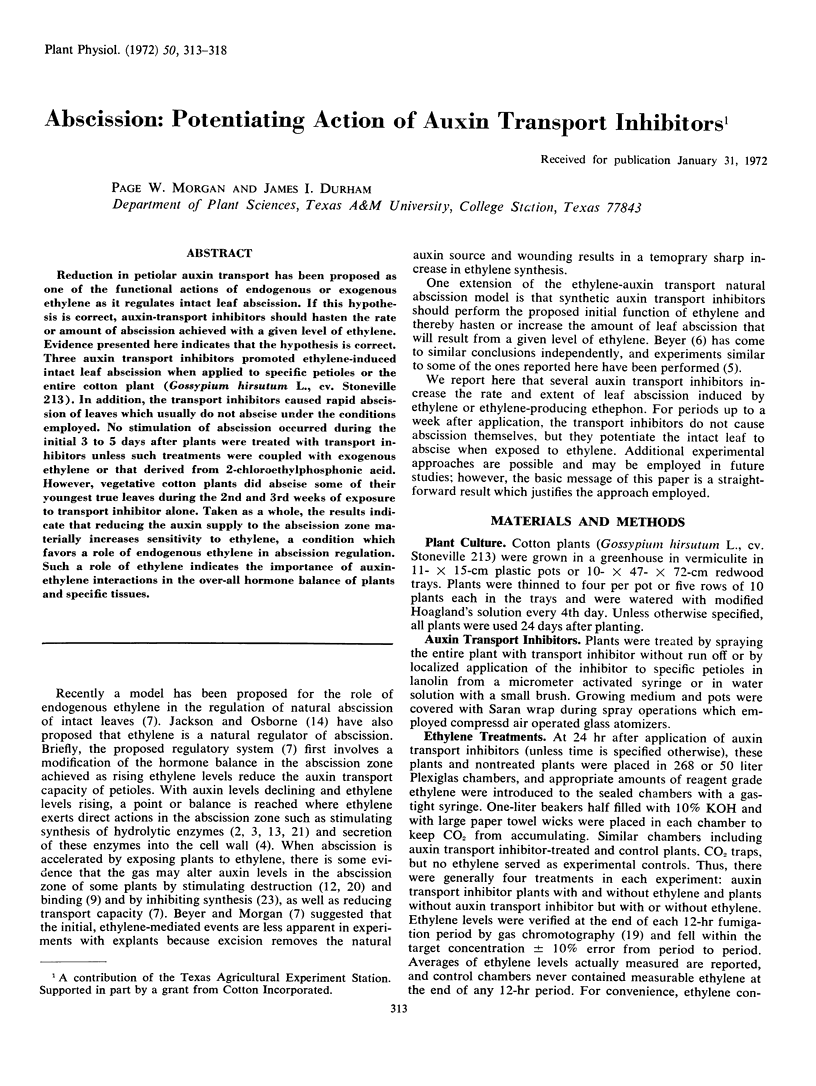
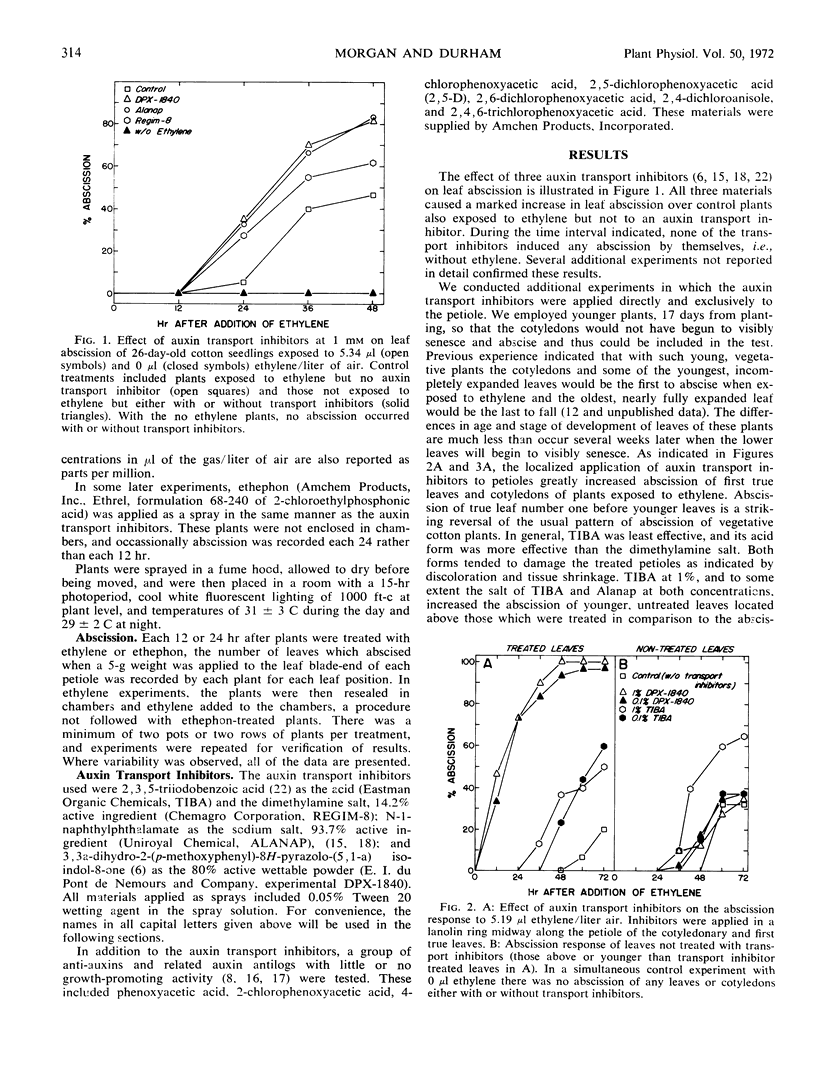
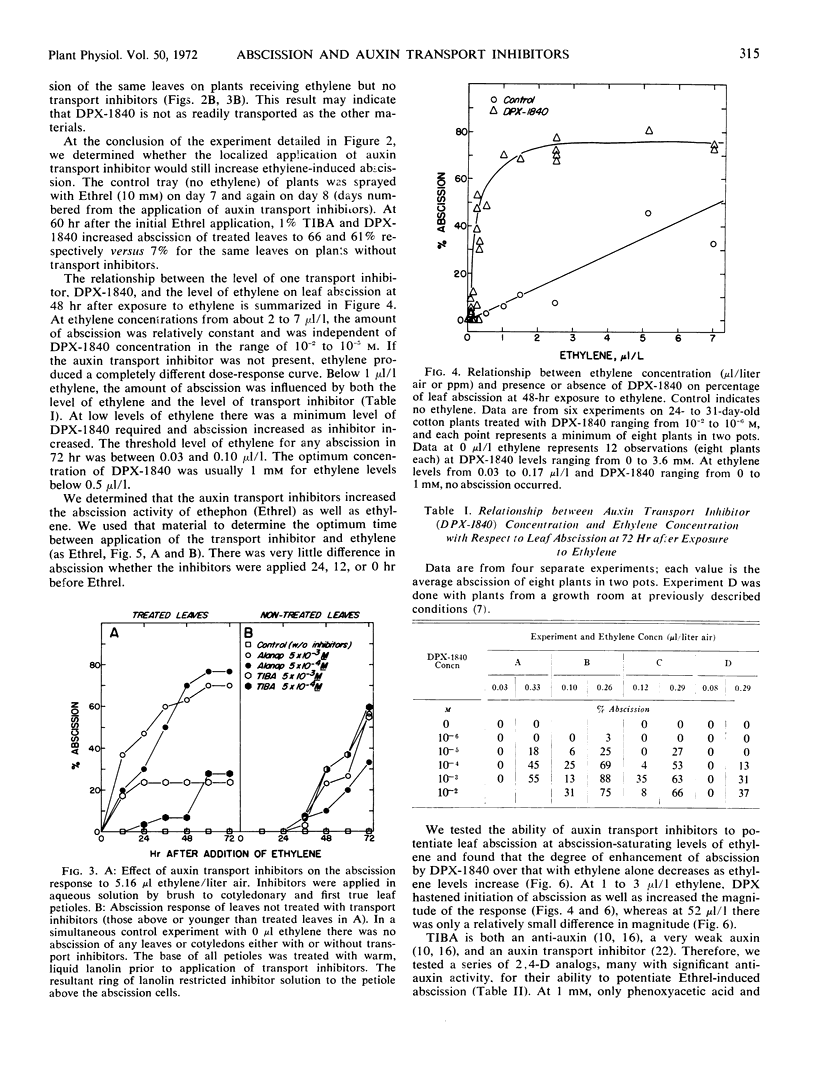

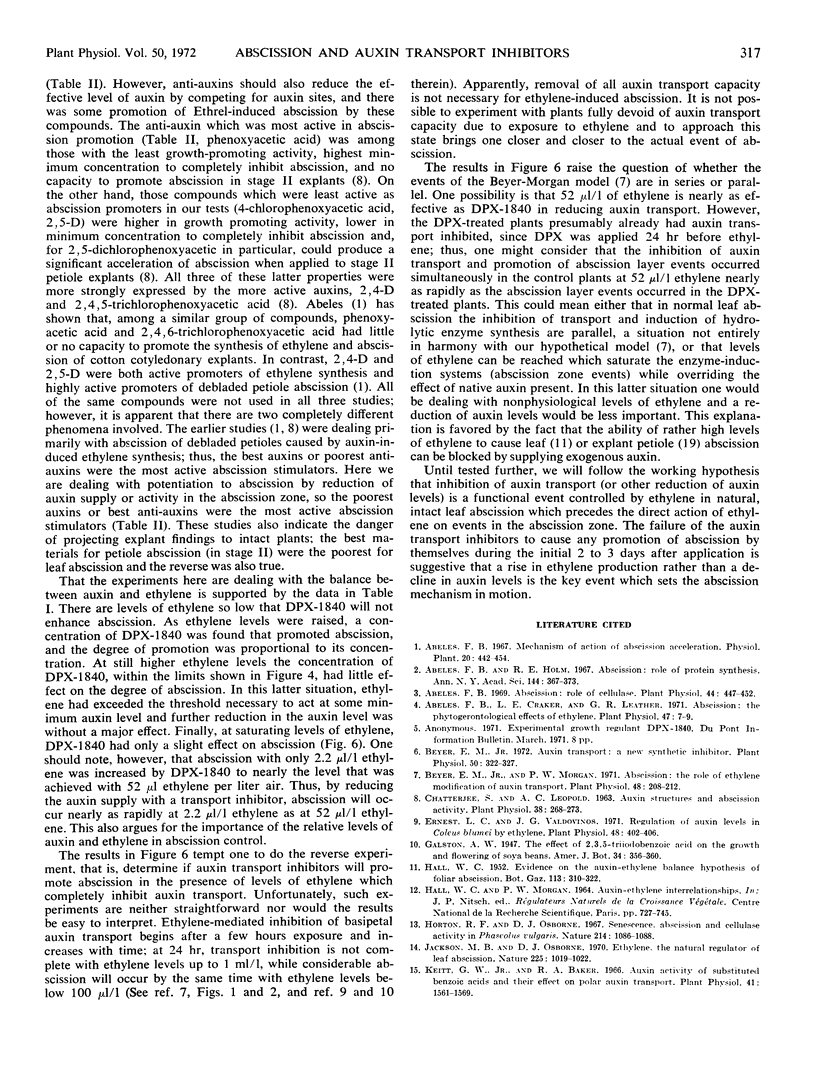
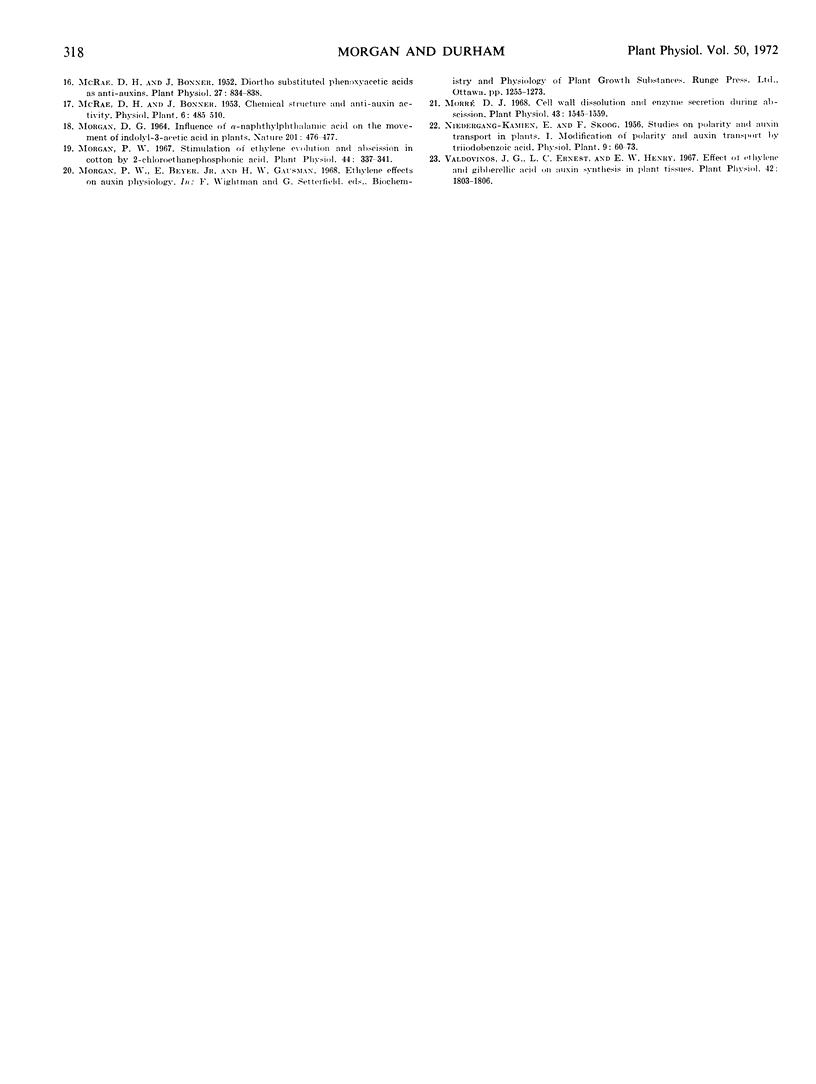
Selected References
These references are in PubMed. This may not be the complete list of references from this article.
- Abeles F. B. Abscission: role of cellulase. Plant Physiol. 1969 Mar;44(3):447–452. doi: 10.1104/pp.44.3.447. [DOI] [PMC free article] [PubMed] [Google Scholar]
- Abeles F. B., Craker L. E., Leather G. R. Abscission: the phytogerontological effects of ethylene. Plant Physiol. 1971 Jan;47(1):7–9. doi: 10.1104/pp.47.1.7. [DOI] [PMC free article] [PubMed] [Google Scholar]
- Beyer E. M. Auxin transport: a new synthetic inhibitor. Plant Physiol. 1972 Sep;50(3):322–327. doi: 10.1104/pp.50.3.322. [DOI] [PMC free article] [PubMed] [Google Scholar]
- Beyer E. M., Morgan P. W. Abscission: the role of ethylene modification of auxin transport. Plant Physiol. 1971 Aug;48(2):208–212. doi: 10.1104/pp.48.2.208. [DOI] [PMC free article] [PubMed] [Google Scholar]
- Chatterjee S., Leopold A. C. Auxin Structure & Abscission Activity. Plant Physiol. 1963 May;38(3):268–273. doi: 10.1104/pp.38.3.268. [DOI] [PMC free article] [PubMed] [Google Scholar]
- Ernest L. C., Valdovinos J. G. Regulation of Auxin Levels in Coleus blumei by Ethylene. Plant Physiol. 1971 Oct;48(4):402–406. doi: 10.1104/pp.48.4.402. [DOI] [PMC free article] [PubMed] [Google Scholar]
- Jackson M. B., Osborne D. J. Ethylene, the natural regulator of leaf abscission. Nature. 1970 Mar 14;225(5237):1019–1022. doi: 10.1038/2251019a0. [DOI] [PubMed] [Google Scholar]
- Keitt G. W., Baker R. A. Auxin activity of substituted benzoic acids and their effect on polar auxin transport. Plant Physiol. 1966 Dec;41(10):1561–1569. doi: 10.1104/pp.41.10.1561. [DOI] [PMC free article] [PubMed] [Google Scholar]
- MORGAN D. G. INFLUENCE OF ALPHA-NAPHTHYLPHTHALAMIC ACID ON THE MOVEMENT OF INDOLYL-3-ACETIC ACID IN PLANTS. Nature. 1964 Feb 1;201:476–477. doi: 10.1038/201476a0. [DOI] [PubMed] [Google Scholar]
- McRae D. H., Bonner J. DIORTHO SUBSTITUTED PHENOXYACETIC ACIDS AS ANTIAUXINS. Plant Physiol. 1952 Oct;27(4):834–838. doi: 10.1104/pp.27.4.834. [DOI] [PMC free article] [PubMed] [Google Scholar]
- Valdovinos J. G., Ernest L. C., Henry E. W. Effect of ethylene and gibberellic Acid on auxin synthesis in plant tissues. Plant Physiol. 1967 Dec;42(12):1803–1806. doi: 10.1104/pp.42.12.1803. [DOI] [PMC free article] [PubMed] [Google Scholar]


